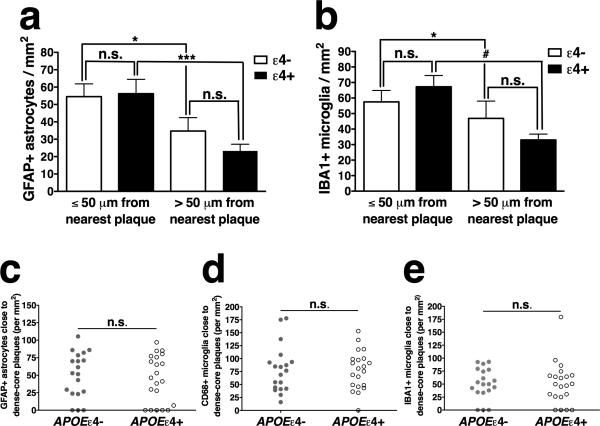Figure 5.
Lack of differential effect of APOE genotype on the association between reactive glia and dense-core plaques. (a, b) Glia-centered stereology-based study. Glial fibrillary acidic protein (GFAP)-positive astrocytes are more abundant in the vicinity (≤50 μm) of dense-core plaques than far away from them (>50 μm) in both APOEε4 carriers (*** p = 0.0002) and non-carriers (* p = 0.0289). The magnitude of the astroglial response does not differ between both APOE groups in either the proximity to plaques (p = 1.0000) or far from them (p = 0.2334) (a). Similarly, Iba1-positive microglial cells are more abundant in the vicinity of dense-core plaques than far away from them in both APOEε4 carriers (# p < 0.0001) and non-carriers (* p = 0.0401), but no significant difference is observed between both genotypes (close: p = 0.3571; far: p = 0.4011) (b). (c-e) Plaque-centered stereology-based study. Numbers of GFAP-positive astrocytes (c), CD68-positive microglia (e), and Iba1-positive microglia (d) in the vicinity (μ50 μm) of 100 randomly selected dense-core plaques were counted and normalized to the size of those plaques. The distributions of values obtained are remarkably similar in APOEε4 carriers and non-carriers (p = 0.55, p = 0.96, and p = 0.96, respectively). Graphs c–e show the median values for each AD case, but the entire distributions were used in the statistical analyses.

